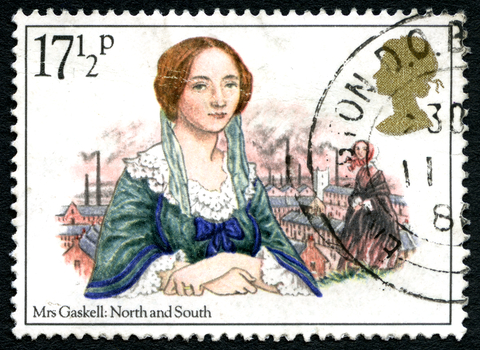Blogger: Wendy Lawton
Today I’m just going to highlight a few techniques I love finding in fiction.
Beats— This is a technique the author uses to seamlessly substitute an action that identifies the character in place of the tired old he-said, she-said. Example: Instead of “I’m not cold,” Jane said, the beat would clue the reader in with “I’m not cold.” Jane pulled her jacket up tight around her neck. That beat tells us much more than the words, doesn’t it?
Brilliant character habits— This is the reason I decided to write this blog today. I was reading over some sample chapters for a new Kathleen Y’Barbo book and she had a lovable, but definitely blond, first person point of view character who would interrupt her telling of the current story and give a telling piece of backstory. When she finished abruptly, and was ready to switch back to the present, the character would always say, “But I digress.” It was a positively genius technique because, as you know, “experts” will tell you to leave out backstory. But in the hands of a fine writer who knows what she is doing, it is nothing short of delightful. Now, of course, none of you can use that particular one because that belongs to Kathleen’s character. Your job is to break the rules if you must but only when executed by a character we want to forgive.

Non-verbal character habits— this technique can be used if you set it up early and the reader understands what it represents. In my very first book my sole POV character was a profoundly blind ten-year-old girl. (Nobody told me a beginner should never attempt something like that.) It meant I could have no visual clues in the entire book. Her little brother was a key part of the plot. He was in trouble but couldn’t tell her, since he counted on her not being able to see him. In the beginning of the book, however, she worried over the state of his well worn boots. They’d lost several nails so that the sole flapped when he walked. She heard and identified every step he took. All we had to “hear” in the book was that faint flapping sound and my young readers knew who was nearby. In another of my books Harriet Tubman’s mother, Old Rit, had a nervous tic of rubbing her work-roughened thumb against the forefinger. I used that as foreshadowing. If the young Harriet walked in the door and heard that scritch-scritch-scritch sound she immediately knew, something bad was about to happen.
Trust your readers— my readers were 8 – 11 year old girls and yet I knew I only had to tell them something one time and they’d get it and apply it again and again. Like Old Rit’s scritching. Sometimes I’ve read a story where it feels like the author is standing over my shoulder, saying, “Get it? Get it?” Yeah. I got it the first twelve times you said that.
That’s just a good start for you. Now it’s your turn. What techniques would you like to suggest for some of your favorite (or not so favorite) novelists?

Interesting post, Wendy, and great examples. A few more come to mind:
* Melville’s autistic scrivener Bartleby, with his immortal, “I would prefer not to”.
* It’s not fiction, but in ‘Fly Low, Fly Fast’, his classic book on air racing, Robert Gandt pokes gentle fun at the giants of the sport. Skip Holm, for example, a fighter pilot in Viet Nam and a test pilot thereafter, has a persona described as ‘a surfer who forgot where he parked his bike’. Never mind that Holm was and is one of the finest pilots God ever made, but he didn’t need the Wolfean ‘right stuff’ accolades; Gandt assumed a degree of sophistication in his readers, and made Skip Holm human.
* For balance, on the ‘annoying’ side, we have the narrator of Alan Paton’s ‘Too Late The Phalarope’ (the aunt of the by-definition tragic hero) who is given to a kind of weltschmertz and phrases like, “…and we were all destroyed.” Well, yes, but do we really need 70,000 words of hand-wringing to witness that destruction?
I love these, Wendy. Especially the nod to action beats.
I personally enjoy subtle hints to a character’s background – those almost-but-not-quite stereotypes that add the proverbial cilantro to their Tex-Mex. That extra bit of flavor that would be hard to identify if missing and nasty if overdone, but that subtly completes the finished product when handled well.
I adore the “But I digress” from Kathleen. Brilliant. I love the beats, but I didn’t know that was the name for it. I like to eliminate every “he said, she said” possible. I did have someone give me a hard time for that. She didn’t like that my characters carried out an action, etc. when they spoke. So I had to evaluate if I was using that too much. I might have been. 😉 So I’m trying to be cautious, but it’s especially great when you have more than two characters in the scene … sure helps with eliminating confusion of who’s speaking without the “he said, she said.”
Thank you, Shelli. It probably wouldn’t surprise you to know that the character to which Wendy refers is a fellow Southern gal from Central Texas who does tend to ramble when she speaks, and when she thinks. To me, having a unique trait assigned to each character goes a long way toward eliminating the he said/she said repetition. It can be something as simple as a favorite word or way of speaking or as odd the habit that my kids’ great uncle had. When speaking to a person, he would always adds the name of the person to whom he is speaking and his relation to that person at the end of the sentence. For example: “Yes, I am home, Andrew, great-nephew.” As I type this, I can hear him saying it and smiling. If you can come up with something like that for each of your characters, you’ll have your readers smiling too–or at least you’ll have them knowing who is speaking. But I digress…
I can so see that, Kathleen. My grandfather always answered the phone … “Ye … llow.” Always, instead of hello. Texan. But I digress … 🙂 I didn’t take advantage of habits like I should have. I’m going to be thinking on this. And I’ve been thinking of adding a cat. 🙂
Thank you Wendy for the post. I love beats, because well done they create added perspective for the reader. Your examples show just that. Beats are just so much more interesting than repetitive, he-said, she-said.
I love the beats! Such an interesting way to get info to the reader. I tend to like stories told in first person. Especially if multiple POVs are used. In some stories the characters’ voices are so well developed I don’t even need to see a character’s name to know who’s talking. I think Wiley Cash is a master of multiple POVs. And I loved Lisa Wingate’s Before We Were Yours. I thought she did a great job with a child’s voice.
Love your examples, Wendy. Especially the scritch-sound and trust your readers. Some authors need to learn the trust thing in setting too. Even in a desert or snow-covered plains you can find more than one characteristic to mention about the setting. I love rich settings and groan when I’m hit over the head with the same detail repeatedly. Laura Frantz impressed me with how she handled the woodlands in A Moonbow Night. In chapter after chapter characters trekked, yet I don’t think she ever repeated a forest-y detail.
Like a vase of fresh flowers set on my table–Thanks, Wendy!
Great tips, thanks for sharing!
Beats are my favorite thing. And yes to all of this but really YES to trusting the readers. (If this comment is appearing a second time it’s because I got a notice that said “Comment is a spam”! Wild!)